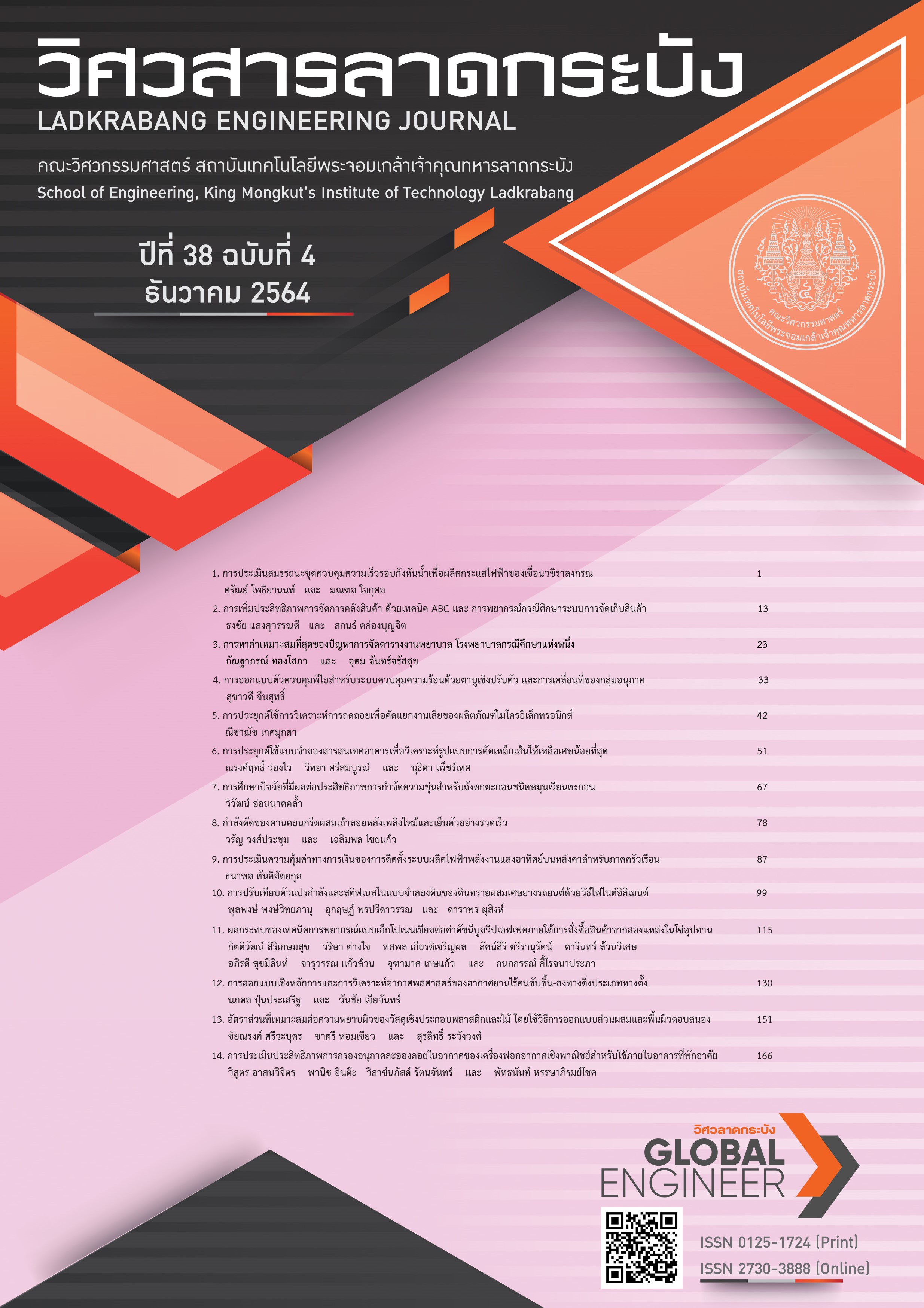Application of Building Information Modeling to Analyze Rebar Cutting Patterns with Minimum Waste
Keywords:
Reinforced Concrete Buildings, Minimum Rebar Waste, Building Information Modeling, Linear Programming ModelAbstract
The problem encountered in constructing reinforced concrete buildings is a large amount of rebar scrap wasted due to the inefficient use of rebar cutting patterns. As a result, the project costs are higher, and the country's economic deficit from rebar imports increases each year. This study presents the interconnection of two data sources, Building Information Modeling (BIM) and Linear Programming Model, to analyze and find effective rebar cutting patterns to minimize rebar waste and cost. Rebar data from BIM was exported and analyzed the cutting pattern to minimize the scrap. Later the rebar cutting data were imported into the parameters of BIM elements. The results from the study showed that rebar scraps were successfully reduced from the cutting process. This study had at least two significances. In terms of construction, it effectively used resources, reduced the construction cost, and avoided the rebar waste smuggling problem from the construction site. In terms of educational value, this study can also be used to calculate standard length rebar, which is cut into several lengths. In addition, importing the cutting data back to the BIM model can reduce the time and mistakes in the operation.
References
Iron and Steel Intelligence Unit, “Thailand Steel Outlook 2020,” Iron and Steel Institute of Thailand, Bangkok, Thailand, Jul. 2021 [Online]. Available: https://iiu.isit.or.th/th/reports/Yearly%20Report.aspx
S. Chinanuwatwong, “Reducing Waste from Cutting Reinforcing Steel in Construction Projects,” Kasetsart Journal Natural Science, vol. 34, no. 4, pp. 526–535, 2000, doi: https://li01.tci-thaijo.org/index.php/anres/article/view/240397/163946
H. Dyckhoff, “A Typology of Cutting and Packing Problems,” European Journal of Operation Research, vol. 44, no. 12, pp. 145–159, 1990, doi: 10.1016/0377-2217(90)90350-K
M. Gradisar, K. Miroljub, R. Gortan and J. Joze, “A Sequenntial Heuristic Procedure for One-Dimensional Cutting,” European Journal of Operational Research, vol. 114, no. 13, pp. 557–568, 1999, doi: 10.1016/S0377-2217(98)00140-4
J. Coffman, E. M. Garey and D. S. Johnson, “Approximation Algorithms for Bin-Packing: An Updated Survey,” Algorithm Design for Computer System Design, vol. 284, pp. 49–106, 1984, doi: 10.1007/978-3-7091-4338-4_3
Y. Cui and Y. Yang, “A heuristic for the one-dimensional cutting stock problem with usable leftover,” European Journal of Operational Research, vol. 204, no. 12, pp. 245–250, 2010, doi: 10.1016/j.ejor.2009.10.028
C. R. Goncalo, A. S. Sergio and M. Marlos, “Modified Greedy Heuristic for the one-dimensional cutting stock problem,” Journal of Combinatorial Optimization, vol. 41, no. 12, pp. 657–674, 2021, doi: 10.1007/s10878-021-00695-4
R. Vahrenkamp, “Random Search in the One-Dimensional Cutting Stock Problem,” European Journal of Operation Research, vol. 95, no. 11, pp. 191–200, 1996, doi: 10.1016/0377-2217(95)00198-0
V. Benjaoran, “Trim Loss Minimization for Construction Reinforcement Steel with Oversupply Constrints,” Journal of Advanced Management Science, vol. 1, no. 13, pp. 313–316, 2013, doi: 10.12720/joams.1.3.313-316
V. Benjaoran and Bhokha, “Three-Step Solution for Cutting Stock Problem of Construction Steel Bar,” KSCE Journal of Civil Engineering, vol. 18, no. 115, pp. 1239–1247, 2014, doi: 10.1007/s12205-014-0238-3
A. Porwal and N. Hewage, “Building Information Modeling–Based Analysis to Minimize Waste Rate of Structural Reinforcement,” Journal of Construction Engineering and Management, vol. 138, no. 18, pp. 943–954, 2012, doi: 10.1061/(ASCE)CO.1943-7862.0000508
M. Mangal and J. C. Cheng, “Automated Optimization of Steel Reinforcement in RC Building Frames Using Building Information Modeling and Hybrid Genetic Algorithm,” Automation in Construction, vol. 90, pp. 39–57, 2018, doi: 10.1016/j.autcon.2018.01.013
M. T. H. Khondoker, “Automated Reinforcement Trim Waste Optimization in RC Frame Structures Using Building Information Modeling and Mixed-Integer Linear Programming,” Automation in Construction, vol. 124, pp. 103599, 2021 doi: 10.1016/j.autcon.2021.103599
The Association of Siamese Architects under Royal Patronage, Thailand BIM Guideline, Plus press Company Limited, 2015, ch. 1–2, pp. 2–14
I. Autodesk, “Dynamo Developer Resources.” dynamobim.org. https://dynamobim.org/. (accessed Aug. 1, 2021)
T. E. Seghier, Y. W. Lim, M. H. Ahmad and W. O. Samuel, “Building Envelope Thermal Performance Assessment Using Visual Programming and BIM, based on ETTV Requirement of Green Mark and GreenRE,” International Journal of Built Environment and Sustainability, vol. 4, no. 3, pp. 227–235, 2017, doi: 10.11113/ijbes.v4.n3.216
D. Team, “DiRoots Connecting the Dots,” diroots.com. https://diroots.com/revit-plugins/revit-to-excel-sheetlink/. (accessed Aug. 1, 2021)
Downloads
Published
How to Cite
Issue
Section
License
Copyright (c) 2021 Faculty of Engineering, King Mongkut’s Institute of Technology Ladkrabang

This work is licensed under a Creative Commons Attribution-NonCommercial-NoDerivatives 4.0 International License.
The published articles are copyrighted by the School of Engineering, King Mongkut's Institute of Technology Ladkrabang.
The statements contained in each article in this academic journal are the personal opinions of each author and are not related to King Mongkut's Institute of Technology Ladkrabang and other faculty members in the institute.
Responsibility for all elements of each article belongs to each author; If there are any mistakes, each author is solely responsible for his own articles.






